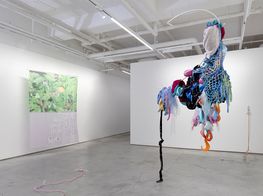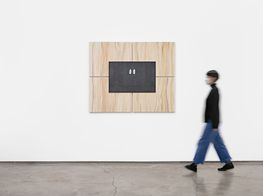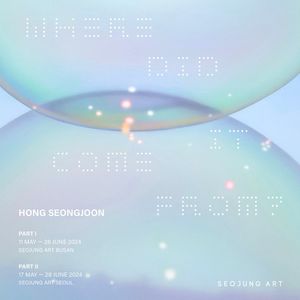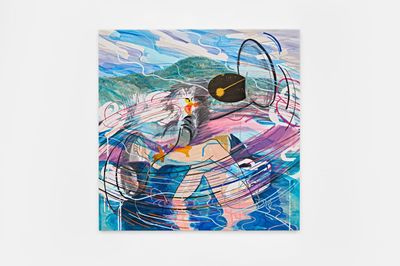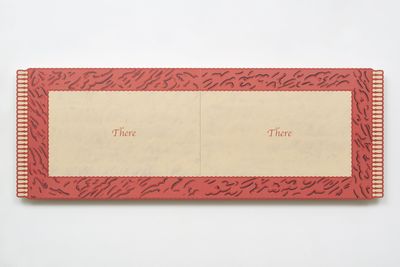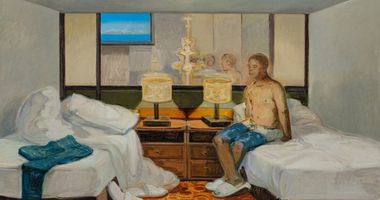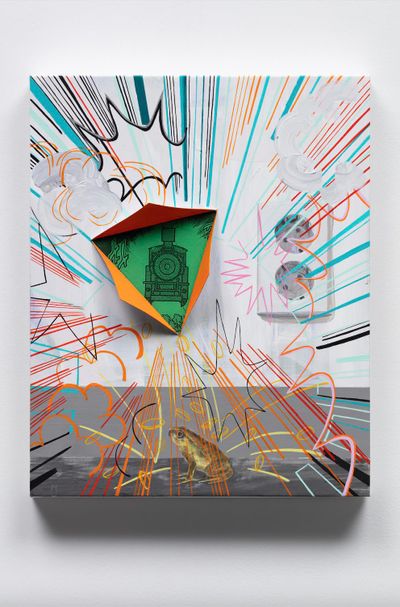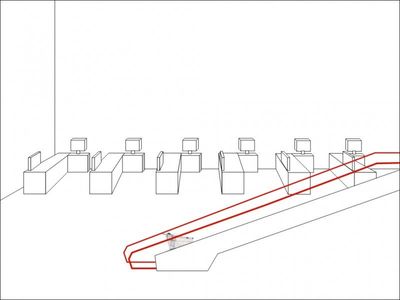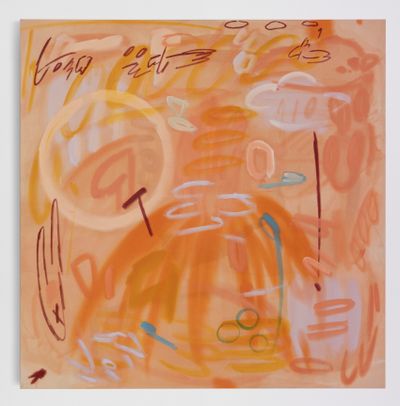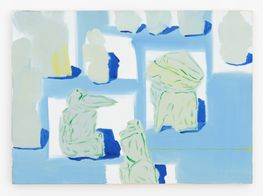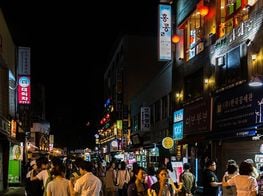Artists Visualise Alternative Spaces at G Gallery
G Gallery | Sponsored Content
Four Korean artists transgress spatial and temporal limits at G Gallery in Seoul as part of Explorations beyond Boundaries (26 January–26 February 2022), which transposes alternative dimensions into traditional landscapes, subverts socially constructed gender roles, and blurs the line between painting and sculpture.
In the fictional spaces staged by artists Lee Mijung, Lee Jungmin, Jung Jin, and Park Kyung Ryul, realism blends into abstraction as solids merge with the planar to introduce alternative ways of looking and understanding painting as a representational medium.
With a background in painting and ceramics, Lee Mijung's shaped canvases contend with social and cultural expectations in South Korea, starting with the assertion that 'women must'—imperatives that the artist has overturned in early installation works like Forbidden Landscape (2014), a mountainscape made from wooden boards painted neon pink, with steaming cartoon dildos planted in the ground.
A similar staging takes place for Lee's six acrylic on birch plywood and canvas works included in this show, which fictionalise domestic objects and interiors to draw out thoughts and impressions of the women associated with them.
In 2-person rug (2020), a rug-like plywood structure surrounded with a red border is divided into two sections, with the words 'There, There' addressing the physical and emotional labour women take on as nurturers.
That this care is not always reciprocated is echoed in Lee's STONE (2021), a pair of acrylic on plywood totems resembling stone with two felines at the top; the base of each is marked with lipstick stains and lines of text that read 'I TOLD YOU I WAS SICK', followed by the response 'AND I WAS SICK OF HEARING IT.'
A quiet mourning of this outdated yet presiding expectation can be sighted in Night – Light (2021), an acrylic on canvas painting by Lee that resembles a dim light reflected on closed blinds, installed to watch over the feline paintings.
In another act of rebellion, in which conventional frameworks are rendered unconventional, Jung Jin's painted landscapes appear to have been doodled over and cut through.
In Switch on -Leg (2021), for instance, a lush mountainscape is interrupted by a pair of crossed legs, a cartoon bird, and a circular incision that opens like a book to reveal two images: a swan on one side and a yellow comet on the other.
This fictional universe continues in the acrylic on paper The day of meeting toad3 (2020), in which an unsuspecting yellow toad sits beneath a graphite cartoon train arriving from a triangular incision—the scene is framed by bright expressive lines that denote sound effects in comics. Here, the wallpaper of reality appears to peel away to reveal the space of imagination.
The same dynamism that propels imaginative realms is furthered in Lee Jungmin's digital landscapes, which transform simple graphic images into animated works like Parking Tower (2020), a PowerPoint animation in which two cars rotate in a stacked tower in a flow-like state, seemingly transported into another plane.
In the second PowerPoint animation, Market (2007), viewers follow the trajectory of a shopping cart rolling through a minimalistic supermarket, as the environment reveals itself line by line and shelves are filled by falling items, slowly landing onto the line surfaces before entering the cart as if displaced by an invisible hand.
Devoid of humans, both animations appear almost meditative, unfolding in what the artist refers to as 'relative time', or time that exists outside the work, as if to nod to the culture of onlooking that follows task delegation to machines.
Crossing the literal boundaries of the canvas, Park Kyung Ryul's painting practice expands into sculpture and installation, often resulting in compositions that are less interested in conveying visual narratives than they are in exploring the composition of paintings.
Earlier works include Vulnerable Painting #89 (2017), in which charcoal and oil lines on paper depict the contours of a plant-like creature on a table, partially rendered in three dimensions, while in Dog Biting Dog (2012), two white dogs hang above a crimson ground dotted with pink balloons and solemn-looking faces planted in the ground.
Included in this exhibition are abstracted landscapes from the artist's 'Picture' series (2020–2021), which set aside explicit references to composition to invoke more nuanced introspection. Subtle references to form emerge in oil on canvas works like Picture 83 (2020), where navy strokes draw out a 'D'-shaped figure from a sea of orange.
Conversely, in Picture 86 (2021), abstract gestures blur and collide across a pale orange ground. Here, Park draws out the exhibition's interrogation into the concept of a boundary and its transgressions. Often, the crossover comes from inquiring into the unnoticed. —[O]

